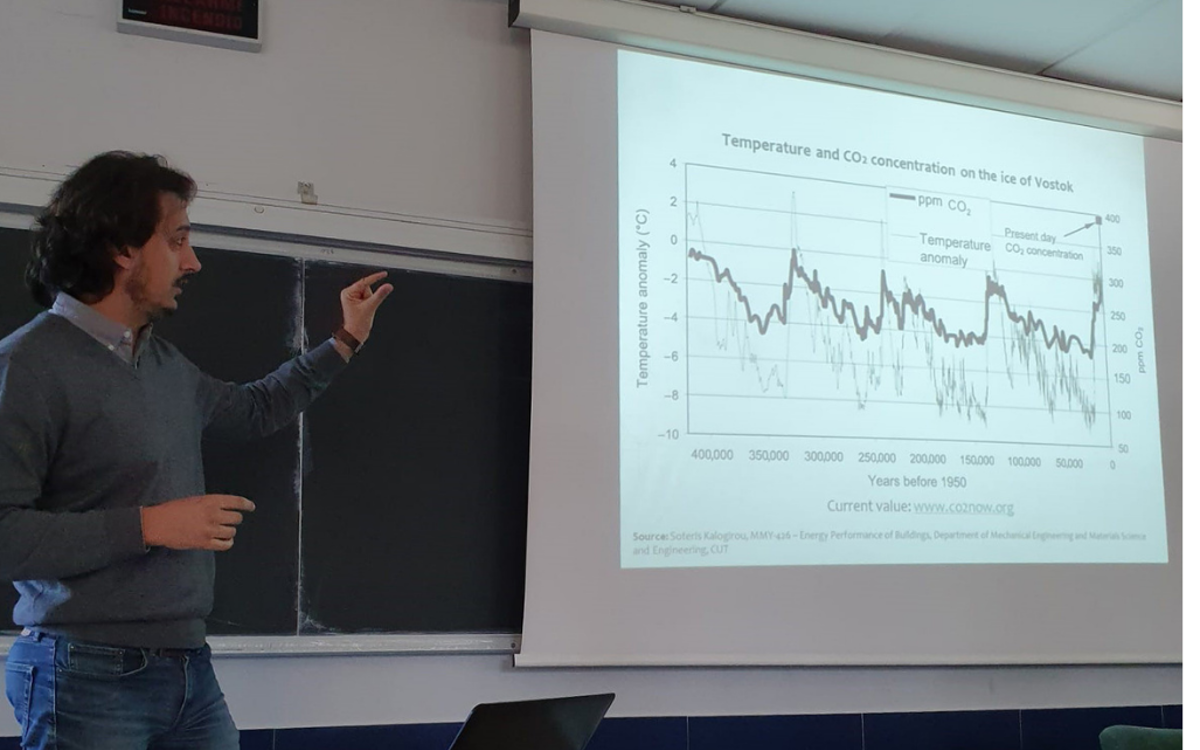By Dr Constantinos Vassiliades


Dr Constantinos Vassiliades

Over the past few years, society has become more aware of the negative impacts of climate change. The move away from conventional fuels and towards renewable energy production is one of the main challenges we must address to protect the environment. Given that around 80% of the world’s population will live in cities by 2030, the fact that cities are responsible for over 70% of global carbon dioxide emissions is of particular significance for us.
The built environment accounts for over 40% of the total primaury energy consumption and 24% of all greenhouse gas emissions around the world. In Europe, for example, planning authorities need to contend with such frameworks as the European Union’s Energy Performance of Buildings Directive (EPBD). This framework requires all new construction projects to be Nearly-Zero Energy Buildings (nZEB) – buildings which need very low or nearly zero amounts of energy to operate, since they have very high energy performance and are covered mostly by energy from renewable sources produced on-site or nearby.
Solar planning
The use of solar energy is a crucial factor in producing renewable energy that could cover a building’s energy needs in whole or in part. This means that the integration of solar energy planning will play a key role in the future design and operation of buildings and their systems. It is not as simple as just putting solar panels on a roof. Good design must implement two main strategies.
The first strategy is the inclusion of passive solar design considerations, such as the location, layout and materials used in the construction of a building. To minimize the energy use and maximize the energy production potential of the building, you need to take into account conditions such as the sun and shade the building receives, its orientation or even the position of windows and ventilation.
The second factor is the siting of the building in the urban fabric. Careful consideration of the orientation of the site in relation to a building’s location may result in 20-50% energy savings. Thus, urban solar planning and design strategies can make a significant contribution to the sustainable design of the built environment – not only at the scale of individual buildings, but at the scale of building clusters as well.
To secure the provision of solar energy in the urban environment, several stakeholders beyond the academic and research community, such as town planning authorities or real estate developers, must be involved to move local urban legislation towards the direction of ‘solar urban planning’. Strong relationships with the local authorities must be developed and architects and urban planners must be trained.

The built environment must also be analysed and digitized, focusing on the digital imprint of the current conditions, to better understand the passive and active energy behavior of buildings. This is necessary to determine possibilities for building integration, as the integration of active solar systems is very difficult or even impossible when a building is listed as historical, as is the case with a number of buildings in the majority of the European cities.
If we can achieve the ultimate goal of zero energy balance for our buildings, then a decisive step to save the world will have been made. As we see above, this requires difficult and very complex steps – but every move in the right direction counts. Let’s try to save the world!
